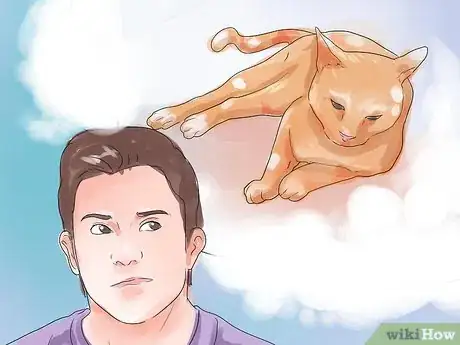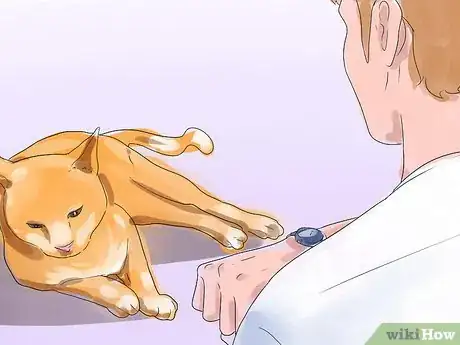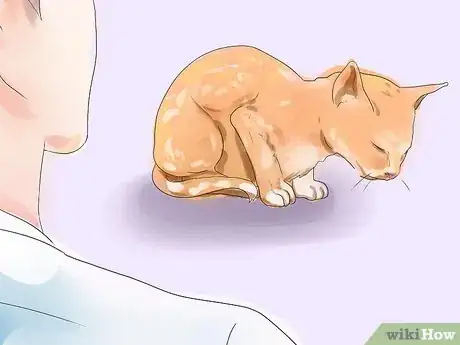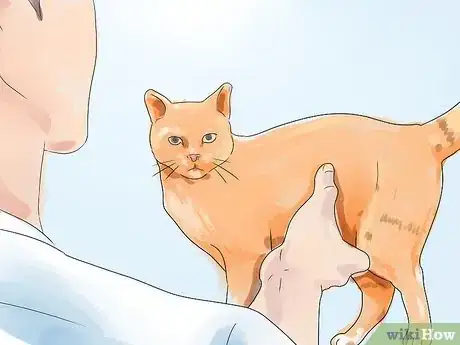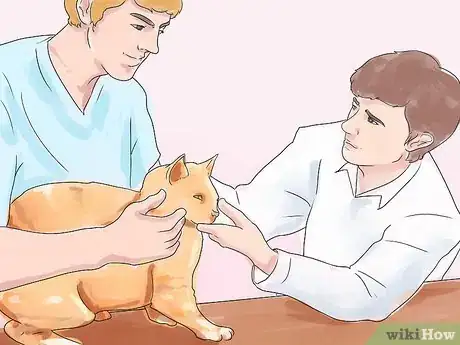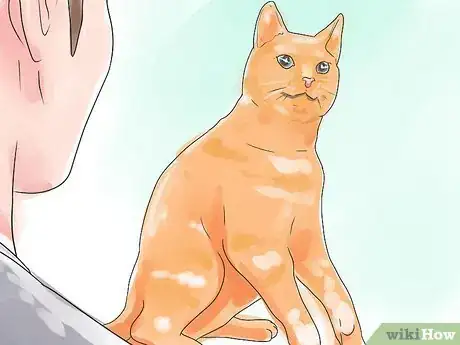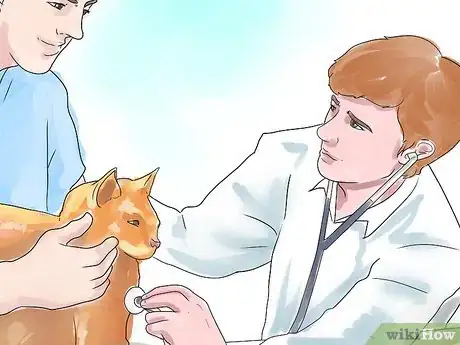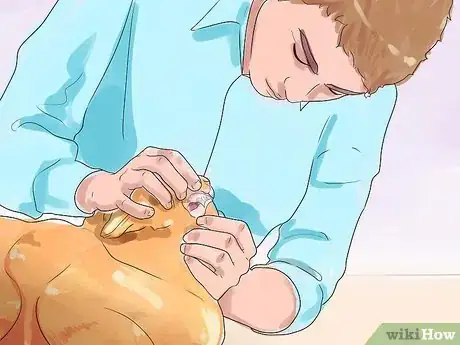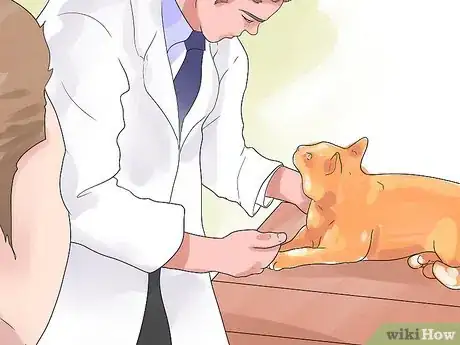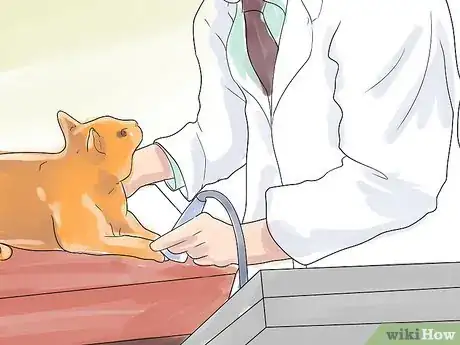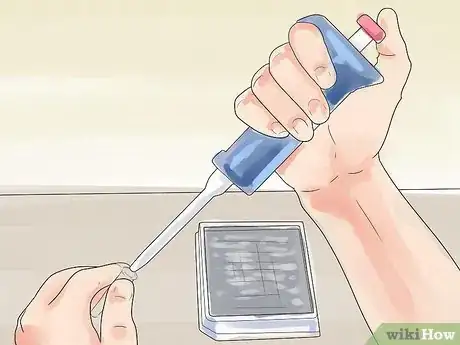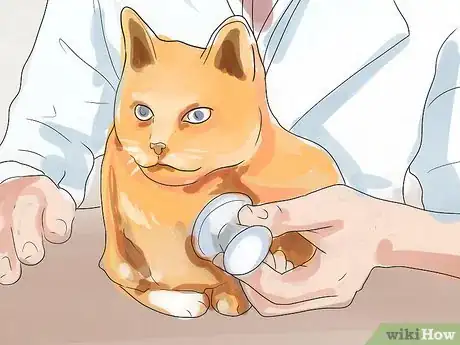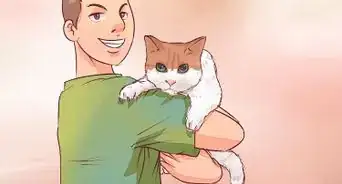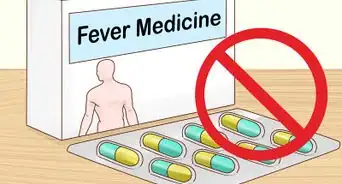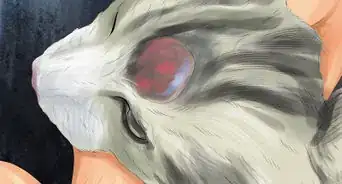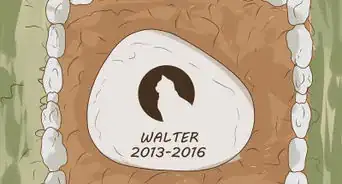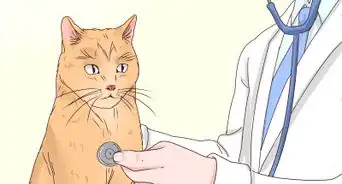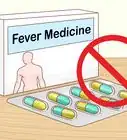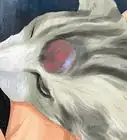This article was co-authored by Melissa Nelson, DVM, PhD. Dr. Nelson is a Veterinarian who specializes in Companion and Large Animal Medicine in Minnesota, where she has over 18 years of experience as a veterinarian in a rural clinic. She received her Doctor of Veterinary Medicine from the University of Minnesota in 1998.
This article has been viewed 29,629 times.
Cats suffer from heart disease just like any other species. However, cats are adept at hiding the early warning signs. Their laid-back lifestyles and talent for sleeping tend to mask symptoms that would be evident in more active animals. Additionally, the symptoms of heart disease are very similar to lung disease. It's important to be vigilant in identifying any health issues in your cat and to bring your cat to the veterinarian as early as possible.
Steps
Recognizing the Early Signs
-
1Notice if your cat seems lethargic. When their heart is struggling, it tends to make the cat lethargic. This is because even a slight increase in activity, such as walking or going up stairs, places increased demands on the circulatory system.
- Heart failure in cats can be caused by value issues, heart muscle problems, electrical conduction problems, hyperthyroidism, and congenital problems.[1]
- If the circulation is inadequate, then the cat feels light-headed, dizzy, and weak. This causes the cat to learn it's best not to move around much, so it tends to rest instead.
-
2Feel for an abnormally high respiratory rate. Another early warning sign of heart disease is if the cat breathes more quickly, even at rest. This is known as an increased respiratory rate. The cat breathes more quickly because of fluid accumulation in the lungs, which makes it hard for your cat to absorb oxygen. In order to get enough oxygen, the cat has to take more breaths.
- If you are suspicious about your cat breathing quickly, watch it while it's resting and count the number of breaths taken in one minute. Repeat this several times to be certain that you are getting a true figure. You will need to take this information to your vet, since it's normal for cats to hyperventilate at the vet's office, making it hard to take an accurate reading.
- The normal respiratory rate in the cat is between 20-30 breaths a minute. More than 35-40 breaths a minute at rest is considered high, and over 40 requires a vet's attention.
Advertisement -
3Look for panting. Another sign of trouble is mouth breathing or panting. It is unusual for a cat to breathe through its mouth unless it is very stressed or has been playing vigorously.
- Mouth-breathing is your cat's attempt to get more oxygen because not enough is getting absorbed.
-
4Watch out for the "air hunger" position. If the cat is short of air, it may adopt the "air hunger" position. The cat crouches on its belly with its head and neck extended in a straight line. The elbows are held away from the chest in order to expand the chest as much as possible with each breath.
-
5Know that a poor appetite is a cause for concern. Many cats with heart disease have poor appetites. When the cat swallows, it has to stop breathing. If the cat is having trouble breathing, then it won't stop breathing long enough to eat.
Identifying Late Signs
-
1Take note of any fainting. Sadly, as feline heart disease progresses the signs and symptoms become more severe. One late-stage symptom of heart disease is fainting. The cat may have fainting episodes when the circulation cannot maintain blood supply to the brain.
-
2Look or feel for fluid in the belly. Another sign of advanced heart failure is fluid building up in the belly as a result of fluid changes in the cat's blood vessels, which can allow fluids to leak into the body.
- The belly may swell and fill like a water balloon.
-
3Know that hind-leg paralysis is a possibility. Another very serious sign of heart failure is hind limb paralysis. In the advanced stages of heart failure, blood clots develop. A common place for blood clots in cats is the point where the main artery to the back legs divides in two. The clot blocks the circulation to the back legs, leaving them paralyzed.
Bringing Your Cat to the Vet
-
1Bring your cat to the vet for a physical exam. If you notice any of the above-mentioned symptoms, then get your cat checked out by a veterinarian. As part of the examination, the vet will listen to the cat's heart with a stethoscope. Based on what they find, the vet will suggest the most appropriate tests.
-
2Expect the vet to assess your cat's breathing. To get an overview of how sick the cat is, the veterinarian may ask to watch the cat as it rests in a basket or box before the exam, which allows the vet to observe the cat's breathing before the stress of an exam.
- The vet will count the respiratory rate and assess how the cat is breathing.
-
3Check for abnormal breathing. With a healthy cat, it is sometimes difficult to see the chest moving in and out. If the cat is having difficulty breathing, either because of heart or lung issues, the chest moves in an exaggerated in-out movement which is clear to see.
- Another hint that points toward abnormal breathing is if the cat's tummy is going in and out with each breath. This is known as "abdominal breathing" and is a sign that the cat is struggling to draw air into the lungs.
- It's important to note that cats rarely cough as a result of heart disease, unlike dogs.
-
4Inform the vet about any history of heart murmur. Your vet will want to know if the cat has previously been diagnosed with a heart murmur. If your cat had a heart murmur, it is considered a pre-exisiting condition that could cause heart disease.
- Your cat may have developed a heart murmur later in life, so a clean medical history does not mean that your cat can't have an issue now.
-
5Allow the vet to listen for heart murmurs. The veterinarian will listen to the cat's heart in order to assess whether a murmur is present or not and how loud the murmur is. The vet will also check the heart rhythm and rate.
- Heart murmurs are common in cats with heart disease. However, a heart murmur does not mean that your cat definitely has heart disease.
-
6Ask the vet about the cat's heart rate. The heart rate is an important guide as to whether the heart is struggling or not. A cat's normal heart rate is approximately 120-140 beats per minute.
- A stressed cat will have a faster heart rate, meaning that the vet's measurement could be high. While a cat is at the vet, most vets consider up to around 180 beats per minute to be normal. Out of the vet's office, 180 beats is very concerning.
- A cat's heart may be beating fast to maintain circulation if its heart is failing.
-
7Ask the vet about the cat's heart rhythm. An abnormal heart rhythm is a warning signal that the heart is struggling. A healthy heart rhythm falls into one of two patterns.
- First, the beat is regular with exactly the same time interval between beats. Second, the cat's heartbeat is synchronized with its breathing.
- An abnormal heart rhythm is erratic.
-
8Make sure the vet checks the cat's mucous membrane color. A cat's gums should be a healthy pink color, just like our own. The veterinarian checks the gum color for indications of circulatory problems.
- If the heart is failing and the circulation poor, the gums tend to be pale or even white. However, this sign is not exclusive to heart disease and gums can be pale because of anemia or pain.
-
9Observe as the vet checks the cat's jugular vein distension. The vet may do something that looks pretty odd, which is to wet the fur on the cat's neck with surgical spirit or rubbing alcohol. She does this in order to see the outline of the jugular veins which contain blood returning to the heart.
- These veins run up the neck, and if the heart is struggling, blood tends to accumulate downstream of the heart and cause the jugular veins to distend.
Getting Your Cat Tested
-
1Expect additional tests to make a diagnosis. It is likely that additional tests will be needed to confirm a strong suspicion of heart disease, to work out the cause, and to gauge the severity of the illness.
- The tools most commonly used in the diagnosis of feline heart murmur are a specialized blood test (proBNP), chest radiographs, and cardiac ultrasound.
- Aside from an X-ray, only an animal cardiologist will perform these tests.
-
2Allow the vet to perform a Pro BNP blood test. This blood test measures the levels of "cardiac bio markers" in the blood. Cardiac biomarkers are proteins that are released from distressed heart muscle cells.
- The results are allocated to one of three groups: low indicates heart disease is not causing the cat's clinical signs, normal range means heart disease is less likely at that time, and high means the cat has significant heart muscle damage.
- Your vet may use Pro BNP blood testing to eliminate heart issues as a cause of symptoms or to monitor your cat's condition once treatment has begun.
- Your vet may also do a blood test to check for kidney disease, liver disease, or hyperthyroidism. If your vet suspects one of these conditions, they may also do a blood pressure test.
-
3Let the vet take radiographs of the cat's chest. The veterinarian takes two views of the cat's chest: one from above and one from the side. This gives a cross reference as to the size and shape of the heart.
- Radiographs can be of limited value because one of the common feline heart conditions, hypertrophic cardiomyopathy (HCM), involves the heart muscle thickening inwardly. Because x-rays only show the heart silhouette, rather than what's going on inside, HCM can be missed with radiography alone.
- However, radiographs are useful to look for fluid in the lungs, such as pulmonary edema, which can indicate a failing heart, and also to rule out other conditions such as feline asthma or lung tumors.
-
4Give the vet permission to do heart ultrasound scans. This is the gold standard for identifying and diagnosing heart disease in the cat. A cardiac scan allows the operator to visualize the chamber of the heart, to watch the heart contract, to follow blood flow through the heart, and to check the health of the heart valves.
- Ultrasounds also detect problems such as fluid in the sac around the heart, which can go undetected on X-rays.
- Ultrasounds also allow the vet to measure the dimensions of the different heart chambers so that they can decide if the heart is functioning appropriately.
References
- ↑ http://www.merckvetmanual.com/cat-owners/heart-and-blood-vessel-disorders-of-cats/heart-failure-in-cats
- Cardiorespiratory disease of the dog and cat. Martin & Corcoran. Blackwell Science
- Pathophysiology of heart failure: Textbook of Veterinary Internal Medicine. 7th ed. Ettinger & Feldman. WB Saunders.
About This Article
To recognize feline heart disease, check your cat for signs of lethargy, like refusing to climb stairs or not moving around as much. Additionally, see if it's breathing quickly, even when it’s resting. You may also notice your cat panting or breathing through its mouth, which means it’s trying to take in more oxygen. If you see your cat crouching on its belly with its head and neck extended in a straight line, this may also be a sign of feline heart disease. For advice on how to get your cat tested for heart disease, keep reading!
